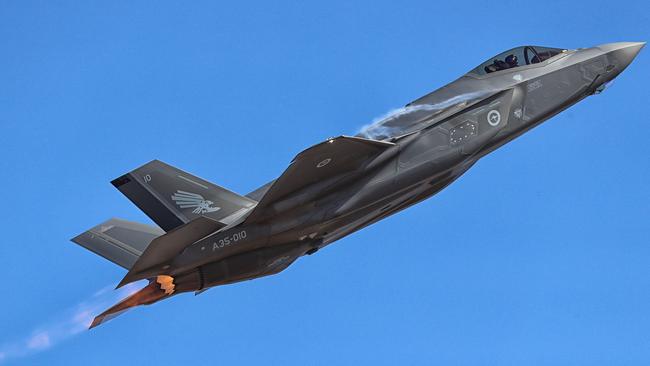Planes, ships and subs missing in action
Vital submarines, surface ships and aircraft have been out of action for tens of thousands of hours more than expected.

Some of the nation’s most important submarines, surface ships and aircraft have been out of action for tens of thousands of hours more than expected, despite a $4.2bn blowout in running costs over the past four years.
New budget analysis reveals the Australian Defence Force’s critical helicopters were unavailable for 26 per cent of planned flying hours since July 2016, while key RAAF aircraft were available for 21 per cent fewer hours than planned.
The navy’s ships and submarines were at sea for 6423 fewer days than forecast, about 14 per cent of planned availability, over the same period.
Analysis of consecutive Defence budget statements confirms the department consistently over-estimates the availability of key assets, while underestimating overall sustainment costs by more than 10 per cent in three of the past four years.
The air force’s C-27J Spartan — a new battlefield heavy-lifter added to Defence’s project watchlist because of problems with its electronic protection system — achieved only about 50 per cent of forecast flying hours, while the army’s ARH Tiger attack helicopters were in the air for 42 per cent fewer hours than planned and budgeted for.
The army’s troubled MRH-90 troop transport helicopters flew 23 per cent fewer hours than forecast, while the workhorse Blackhawk helicopters were unavailable about 21 per cent of the time they were supposed to be in the air.
The RAAF’s electronic warfare fighter jets, the E/A-18G Growlers, flew nearly 27 per cent fewer hours than forecast over the four-year period while the new and expensive Joint Strike Fighters achieved 25 per cent fewer flying hours than planned and budgeted for.
Labor’s assistant defence spokesman Pat Conroy said some of the issues were “undoubtedly related to the long list of new equipment that is delayed under this government, forcing older weapon systems to run longer than planned”.
“As worrying is the fact that some of the ADF’s newest equipment is nowhere close to meeting the required availability,” he said.
“For example, the air force’s Joint Strike Fighters and Growlers are seriously underperforming, as are the navy’s brand new (Seahawk) Romeo helicopters.”
The budget papers confirm the navy’s major combat platforms, including the Collins-class submarines, the Air Warfare Destroyers and Anzac Frigates, were unavailable for 1185 days, or 8.6 per cent of the forecast time they were planned and budgeted to be at sea.
The navy’s crucial hydrographic mapping vessels, needed to chart routes for the nation’s submarines, were unavailable for 22 per cent fewer days than forecast over the four-year period.

Amphibious and supply ships, including the Landing Helicopter Docks HMAS Canberra and Adelaide, were out of action for about 25 per cent of the hours they were planned to be at sea.
It’s understood this shortfall was in part due to propulsion problems on the two LHDs that were resolved in 2019.
The sustainment cost blowout for 2019-20 was $1.23bn, 10 per cent more than initially forecast.
In 2018-29, the blowout was 14 per cent on past forward estimates, while sustainment costs in 2017-18 were 20 per cent higher than initially budgeted.
The European-designed Tiger and Taipan helicopters have faced ongoing performance issues, and have been compared unfavourably with their American-made alternatives. Retired air marshal Geoff Brown, a former air force chief, said US-produced helicopters tended to be more reliable. “In general, because of the numbers of aeroplanes and helicopters produced for the US armed forces, the supply chains are bigger and more robust. That’s one of the issues you run across when you deviate off an American platform,” he said.
Mr Brown said the availability of aircrews was also an important contributor to the achievement of budgeted flying hours.
He said the COVID crisis could have one positive aspect in it might slow the drain of RAAF pilots to major airlines, and allow recruitment of more personnel. “If you really wanted to extract more capability from the weapons systems we’ve got, you’d increase crewing ratios. At the moment, there are probably only 18 pilots per squadron … ideally you’d have 24 to 26.
Australian Strategic Policy Institute defence budget expert Marcus Hellyer said sustainment costs always rose faster than planned. “It’s a double whammy. The old system costs more the older it gets, but when you get a new thing to replace it, it costs even more again to sustain.”
Defence did not respond to requests for comment by deadline.




To join the conversation, please log in. Don't have an account? Register
Join the conversation, you are commenting as Logout